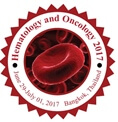
Lixin Rui
University of Wisconsin-Madison, USA
Title: Oncogenic cytokine signaling in human lymphoma
Biography
Biography: Lixin Rui
Abstract
The Janus kinas (JAK)/signal transducer and activator of transcription (STAT) pathway is central to signaling by receptors of diverse cytokines, growth factors and related molecules, which is critical for normal hematopoiesis and immune response. However, this signaling pathway is deregulated in several B cell lymphomas. In activated B-cell-like diffuse large B cell lymphoma (ABC DLBCL), autocrine production of IL-6 and IL-10 can result from high NF-kappaB activity, which is caused by a variety of genetic alterations, such as mutations in MYD88 and CARD11. Our recent work has demonstrated that JAK1 is an active kinase downstream of IL-6 and IL-10 signaling that activates STAT3. Interestingly, JAK1 can function in the nucleus to regulate gene expression through phosphorylating histone H3 on tyrosine 41. There are nearly 3,000 JAK1 epigenetic target genes including MYD88, IRF4 and MYC, of which expression is essential for cancer cell survival and proliferation.
Here we have investigated the canonical gene regulatory mechanism by STAT3 in ABC DLBCL cells. We performed STAT3 ChIP-seq assay in two ABC DLBCL cell lines TMD8 and OCI-Ly10 and identified 4,746 potential STAT3 target genes in TMD8 cells and 6,058 in OCI-Ly10 cells. RNA-seq analysis demonstrated that 53% of those in TMD8 cells and 68% of those in OCI-Ly10 cells changed their expression, suggesting direct STAT3 target genes. Of note, 2,251 genes overlapped between the two cell lines. Gene ontology analysis of these common STAT3 target genes showed the enrichment of gene signatures that involve B cell activation, proliferation, differentiation, and apoptosis. Further gene set enrichment analysis (GSEA) revealed the type 1 interferon pathway regulated by STAT3. Indeed, RNA-seq data showed increased expression of genes in this pathway including STAT1, STAT2, IRF7, and IRF9 following knockdown of STAT3 by shRNAs. These results were further confirmed by immunoblot analysis, suggesting inhibition of type 1 interferon by STAT3. It is known that the type 1 interferon pathway is proapoptotic and is suppressed by IRF4 in ABC DLBCL cells. This pathway can be activated by Lenalidomide due to inhibition of IRF4 expression. Based on these findings, we performed in vitro cell survival assay and found that Lenalidomide indeed enhanced cell killing by STAT3 shRNA or the JAK inhibitor Ruxolitinib. We will test this synergism using an ABC DLBCL xenograft animal model. Our study provides a novel suppressive mechanism of type 1 interferon signaling by STAT3, which supports a potential targeted therapy for ABC DLBCL.

